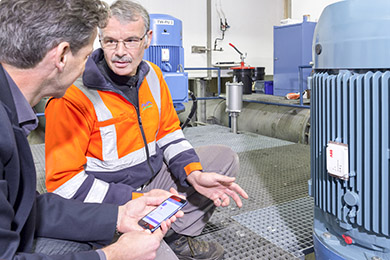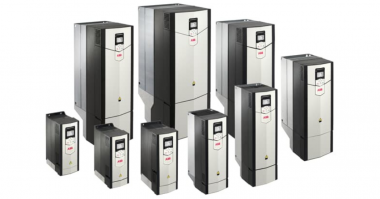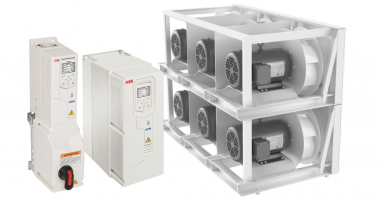Contributor: ABB
Technology has changed how we live – everything from the way we use our ‘phones’ to the way we watch television, and even the way our smart watches not just tell us the time but monitor our blood pressure, temperature, pulse and perspiration; all in an effort to help us stay fit and warn when something starts to go wrong. Having fitness bands and smart watches came with the evolution of technologies disrupting markets over the last decade, and the result has empowered people to take a more proactive approach to their care and well-being. Recognizing our use of the most modern and trendiest of products makes us realize that technology has not just changed how we live, but also how we work.
Disruptive technology often motivates companies afraid of losing market share or relevancy to change their approach, significantly altering their business to adopt or deploy innovative technologies. Failure to integrate new technologies can mean lost opportunity when it comes to managing labor, capital, resources, and expanding market share, among other things. When we think about disruptive technologies in regards to the motor-driven pumping and process industries, there are different areas where we see innovation – from materials upgrades and engineered design changes for individual components to the various ways we manage our assets. Asset management is an area where we see disruptive technologies having an incredible impact.
In the past, plant personnel figured out there was a problem with the equipment *after* the problem had already occurred, limiting asset management to ‘repairing or replacing’ the failed equipment. Then, with the introduction of condition monitoring technologies, maintenance technicians began planning routes and walking through the plants, taking individual measurements on vibration, temperature, amp draw, and other operating data in order to manually assess the condition of the equipment. Condition monitoring is not a new concept – it has been around for a solid decade or so. The disruption happening right now is that industry leaders are using cutting edge technologies to give our pumps, motors, and even bearings, a voice.
Your Equipment can talk to you. Are you listening?
Right now, we have the capability to “hear” from our assets…to “see” the health and performance of not just our equipment, but our entire motor-driven systems – and it’s as simple as opening a smartphone app. If we are proactive in employing leading sensing technology, we can take advantage of ABB’s concept of the Internet of Things, Services and People (IoTSP). ABB’s smart sensors work in tandem with the IoTSP to open up new opportunities for machine builders and end users who operate large production facilities.
These sensors, attached directly to the motor frame, are small, unobtrusive, self-powered, and most importantly, create a wireless connection to the cloud. Once installed, the motor’s nameplate details and bearing information are fed into the sensor, and a wireless connection is established to transmit data via a smartphone or a gateway to the cloud. Sophisticated algorithms analyze the motor data and convert it into useful actionable information. The smart sensor monitors the motor’s performance and can detect issues like bearing faults, air gap eccentricity, cooling problems and overloading. It can reveal issues that account for 70 percent of motor failures.
It is important to point out that taking a holistic approach to asset management means more than just adding sensors to equipment. ABB connects drives, motors, bearings and pumps to offer advanced monitoring and analytics of their powertrain equipment. This is what we call The ABB Ability™ Digital Powertrain. The digital powertrain components are equipped with sensors and cloud connectivity. Variable speed drives are able to control any motor and are connected via the cloud gateway, while motors, mounted bearings and pumps connect wirelessly with the ABB Ability™ Smart Sensor.
The ABB Ability™ Smart Sensor can deliver updates, alarms or monitoring data directly to mobile devices, so an operator does not need to be sitting in a control room to receive a warning or alarm. They can be anywhere and receive notifications.
“The ABB Ability™ Digital Powertrain forms the basis of the motion business’ digital offering,” explains Morten Wierod, President of ABB’s Motion business. “Data aggregation and analytics helps our customers to learn faster about their equipment and have safer, more reliable and efficient operations. Analytics also means that we, as a business at ABB, can understand more about how we can support our customers as factories become more automated.”
The ABB Ability™ Digital Powertrain enables plant operators to improve the performance, reliability and efficiency of their powertrain components. The data insights gained from the powertrain enables customers to be better connected with their assets and make even better decisions to ensure safe, reliable and efficient operations. Suitable for applications in the process, discrete and infrastructure industries, the ABB Ability™ Digital Powertrain enables users to digitally “see” operational variables and health indicators through an integrated, one-stop portal – including availability, environmental conditions and fault events.
What can happen when we embrace disruptive technologies?
Boost Productivity. Identifying potential problems before they occur significantly reduces costs and increases productivity. A holistic approach to asset management helps prevent unplanned downtime and the associated costs of lost production. It also enables more accurate maintenance during scheduled downtime, and spare parts inventory can be tailored according to motor performance data and needs. Never before has so much accurate data been made continuously available so easily from operating motors. The impact on business will be profound with unplanned downtime reduced by up to 70% and motor lifetime extended by up to 30%.
Energy Efficiency. Disruptive technologies can help achieve both efficiency improvements AND reduce energy consumption across the loading spectrum. Reduced energy consumption across the loading spectrum means that a lower load translates directly into lower energy consumption by the motor. On a traditional induction motor as the load drops, the efficiency drops and energy consumption increases. On the latest motor technologies employing permanent magnets, as the load drops the energy consumption also drops. This is a fundamental shift in energy consumption. Smart sensors not only monitor the motor’s health, but empower professionals to analyze energy consumption patterns. This helps identify poorly dimensioned motors so that plant engineers can select the correct motor for the actual load. The analysis also helps users optimize processes to reduce energy use, often achieving energy efficiency improvements by up to 10%.
Efficiency for infrastructure. ABB Ability™ Digital Powertrain monitoring solutions are successfully used in cooling, heating, water and other building applications. Plant operators can receive reports on real-time indicators like reliability, usage patterns, power consumption and stress levels. These are updated and accessible at any time. ABB specialists can also analyze the equipment to understand the impact of the environment on specific components.
Safety. Safety is critical to discrete industries such as the food and beverage and logistics sectors. A malfunction or mechanical problems in an application may create a serious safety hazard for the machine and for those working in the plant. Digital powertrain monitoring means that production managers and operators can identify malfunctions via the monitoring portal, remotely, to support safe operations.
Reliability. Process industries, such as mining, oil and gas, metals, and pulp and paper need to ensure that their operations are reliable at all times. A process failure in any of these industries can cost hundreds of thousands of dollars in unplanned downtime.
By embracing disruptive technologies – and working with leaders in the industry – plant engineers no longer need to walk the plant, gathering motor data with portable instruments and then interpreting the measurements to decide if maintenance is needed. Instead, and without additional effort, maintenance schedules can be accurately planned, removing nasty breakdown surprises and unplanned shutdown of processes (which can be costly).
 We can continue to move from ‘reactive’ maintenance strategies to ‘proactive’ asset management. Motors and other machinery can be serviced before they fail, avoiding more serious secondary damage to other equipment. Service providers can analyze the information and calculate potential energy savings, optimize maintenance schedules and propose actions to improve plant performance and reduce costs.
We can continue to move from ‘reactive’ maintenance strategies to ‘proactive’ asset management. Motors and other machinery can be serviced before they fail, avoiding more serious secondary damage to other equipment. Service providers can analyze the information and calculate potential energy savings, optimize maintenance schedules and propose actions to improve plant performance and reduce costs.
Learn more about holistic asset management solutions by visiting https://new.abb.com/drives/digital-powertrain-monitoring
About ABB
ABB (ABBN: SIX Swiss Ex) is a pioneering technology leader with a comprehensive offering for digital industries. With a history of innovation spanning more than 130 years, ABB is today a leader in digital industries with four customer-focused, globally leading businesses: Electrification, Industrial automation, Motion, and Robotics & Discrete Automation, supported by its common ABB Ability™ Digital platform. ABB’s market leading Power Grids business will be divested to Hitachi in 2020. ABB operates in more than 100 countries with about 147,000 employees. www.abb.com
http://test.empoweringpumps.com/products/abb-acq580-drives-water-wastewater/







Comments